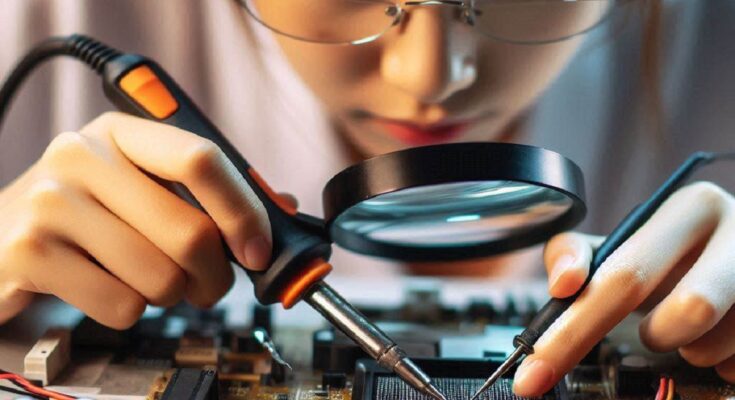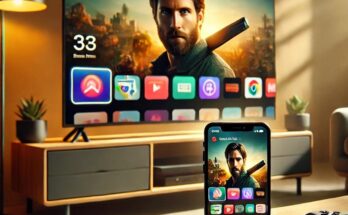LCD displays, gracing our laptops, smartphones, TVs, and countless other devices, are remarkable feats of technology. But even these marvels can encounter glitches sometimes. Don’t fret! This guide delves into common LCD display problems and equips you with solutions to get your screen back in tip-top shape.
Diagnosing the Issue: Identifying the Culprit
Before diving into fixes, accurately identifying the problem is crucial. Here are some common LCD display issues and their telltale signs:
-
Dead Pixels: These appear as tiny, permanently stuck dots on your screen, either black or bright white in color. Dead pixels are typically hardware issues and often indicate a malfunctioning pixel.
-
Stuck Pixels: Unlike dead pixels, stuck pixels can sometimes be revived. These pixels remain fixed on a single color (red, green, blue, or white) instead of displaying the correct color variations.
-
Horizontal or Vertical Lines: Thin lines running consistently across or down your screen point towards a problem with the display’s ribbon cable, which carries data to the LCD panel.
-
Flickering or Dimming: This issue can be caused by a faulty backlight, a loose connection between the display and the device, or even software problems.
-
Distortion or Blurry Images: A distorted or blurry image could indicate a damaged LCD panel, a loose connection, or a graphics card malfunction (on computers).
Gathering Information
To effectively troubleshoot, gather some information about your device and the issue:
- Device Type: Is it a laptop, monitor, TV, or another device with an LCD display?
- Symptoms: Describe the problem in detail. Are there specific colors affected? Did the issue appear suddenly or gradually?
- Recent Changes: Did you recently drop the device, install new software, or make any hardware modifications? This information can help identify potential causes.
Once you have a clearer picture of the problem, let’s explore potential solutions.
DIY Fixes: Taking Matters into Your Own Hands
Important Note: Before attempting any physical repairs, ensure your device is unplugged and powered off. Consult your device’s user manual or manufacturer’s website for specific disassembly instructions to avoid causing further damage.
-
Dead Pixels: Unfortunately, there’s no guaranteed fix for dead pixels. However, some online tools claim to help revive stuck pixels by rapidly cycling colors on the screen. While success rates vary, it’s worth a try for stuck pixels but unlikely to work for true dead pixels.
-
Stuck Pixels: There are several methods to attempt reviving stuck pixels. Here are a few approaches:
- Pixel Massager: Free online tools or downloadable software programs rapidly cycle colors on the screen in an attempt to unstick the pixel.
- Manual Pixel Pressing: (Use caution) With the device powered off, gently apply pressure to the affected area using a soft, microfiber cloth. Be very careful not to press too hard, as this could damage the screen further.
- Warm Compress: (Use caution) Apply a warm compress (not hot) to the affected area for a few minutes. The heat might help loosen the stuck pixel.
-
Horizontal or Vertical Lines: This typically indicates a loose or damaged ribbon cable connecting the display to the device’s motherboard. If you’re comfortable with disassembly, you can try carefully reseating the cable. Consult your device’s service manual for specific instructions. For some devices, a replacement cable might be necessary.
Flickering or Dimming
-
- Adjust Brightness Settings: This might seem obvious, but a simple adjustment of the brightness controls could solve the issue.
- Check Power Connections: Ensure the power cable is securely plugged into both the device and the outlet. Try using a different power outlet to rule out outlet-related problems.
- Update Drivers (For Computers): Outdated graphics card drivers can sometimes cause display flickering. Update your graphics drivers to the latest version and see if the issue persists.
Distortion or Blurry Images
-
- Adjust Display Settings: Many devices allow adjusting screen resolution and sharpness settings. Experiment to find the optimal configuration for your needs.
- External Monitor Test (For Computers): If you have a desktop computer, try connecting it to a different monitor. If the image appears clear on the external monitor, the problem likely lies with your laptop’s LCD panel.
Remember: These are general troubleshooting steps. Consult your device’s user manual or manufacturer’s website for specific instructions and warranty information. If you’re uncomfortable attempting any repairs yourself, seeking professional help is always recommended.
Seeking Professional Help: When DIY Isn’t Enough
If the DIY fixes we explored haven’t brought your LCD display back to life, don’t despair! Here’s when seeking professional help becomes the wisest course of action:
-
Complex Issues: For problems like damaged ribbon cables, faulty backlight units, or internal display panel malfunctions, professional repair is often necessary. Technicians have the expertise and tools to diagnose the exact cause and perform the repairs safely and effectively.
-
Warranty Coverage: If your device is still under warranty, contacting the manufacturer or a certified repair center is the best option. Warranty coverage typically includes repairs for hardware malfunctions, potentially saving you money on the fix.
-
Data Security Concerns: For devices like laptops and smartphones that store sensitive data, attempting complex repairs yourself might risk data loss. Professional repair services often prioritize data security and can ensure your information remains safe during the repair process.
-
Limited Technical Expertise: If you’re unsure about disassembling your device or lack the confidence to perform repairs yourself, seeking professional help is a wise decision. Trying a fix beyond your skillset could lead to further damage.
Finding the Right Repair Professional
When seeking professional help, consider these factors:
-
Manufacturer Repair Centers: Many manufacturers offer authorized repair services. This ensures your device is repaired using genuine parts and qualified technicians familiar with the specific device model.
-
Independent Repair Shops: Numerous independent repair shops specialize in fixing electronic devices. Research online reviews and customer experiences to find a reputable shop with experience repairing your specific device type.
-
Data Backup (For Devices with Data): Before handing over your device for repair, ensure you have a recent backup of all your important data. This protects your information in case of any unforeseen circumstances during the repair process.
Prevention is Key: Caring for Your LCD Display
By following these simple tips, you can minimize the risk of LCD display problems:
-
Handle with Care: Avoid dropping your device or applying excessive pressure to the screen. Invest in a protective case for added peace of mind.
-
Maintain Cleanliness: Use a soft, microfiber cloth to clean your screen regularly. Avoid harsh chemicals or abrasive cleaners that could damage the display coating.
-
Adjust Brightness Settings: Excessive screen brightness can strain the display over time. Adjust the brightness to a comfortable level for your viewing needs.
-
Avoid Extreme Temperatures: Expose your device to extreme heat or cold for extended periods. This can stress the display components and potentially lead to malfunctions.
By understanding common LCD display problems, attempting DIY fixes when safe to do so, and knowing when to seek professional help, you can ensure your LCD displays stay vibrant and functional for years to come. Remember, a little preventative care goes a long way in protecting your valuable devices.




